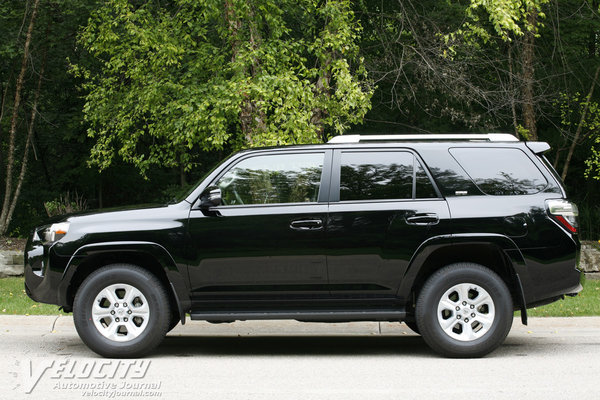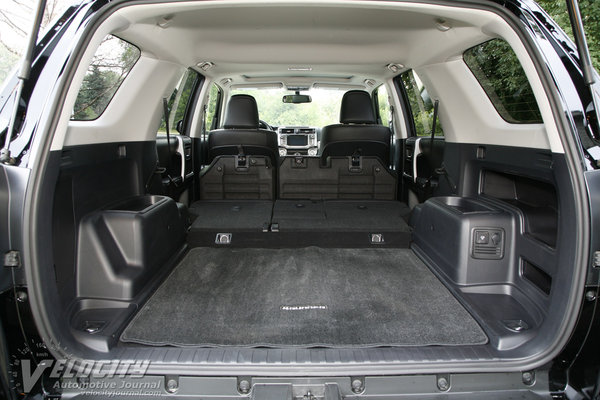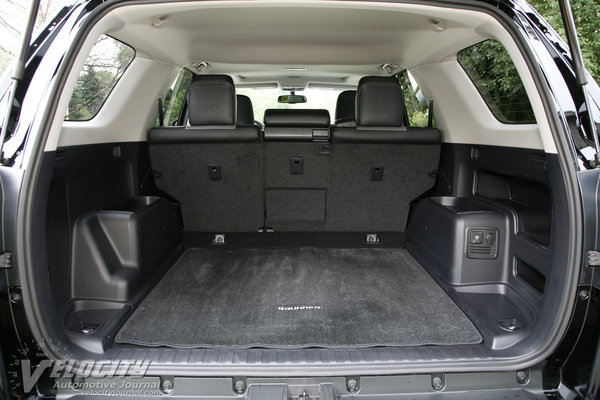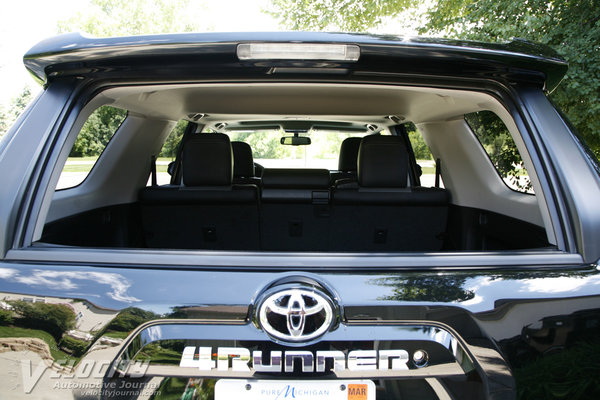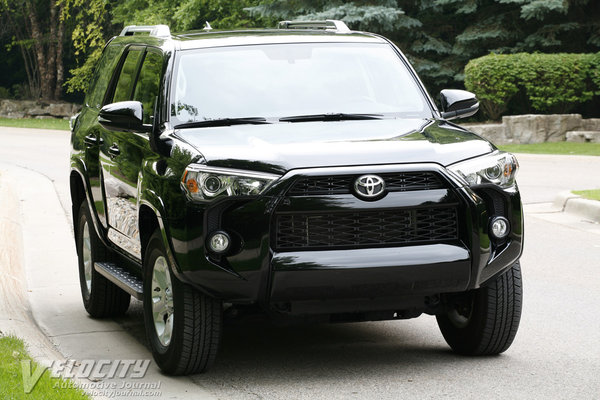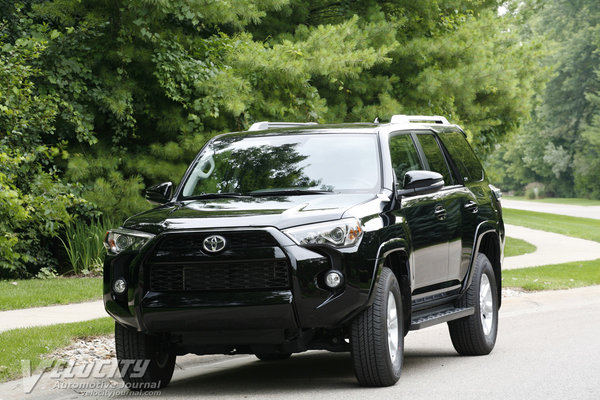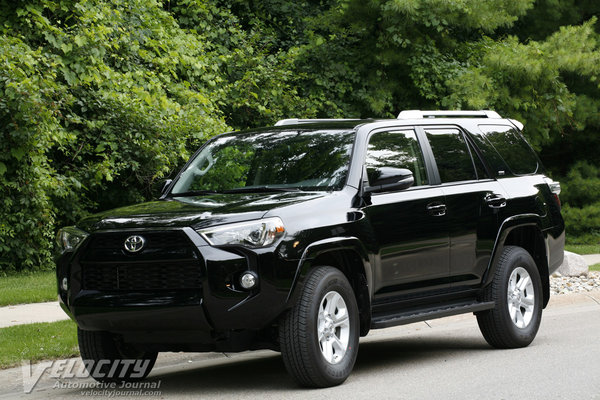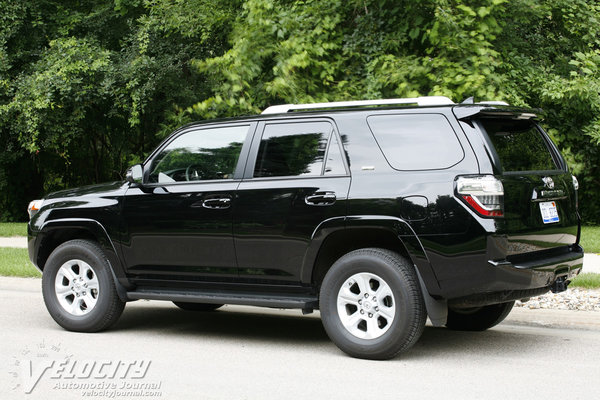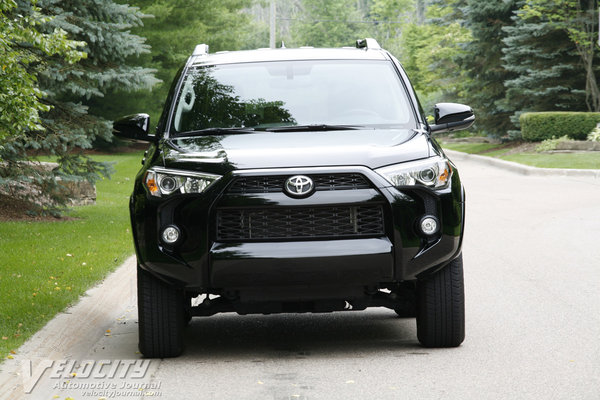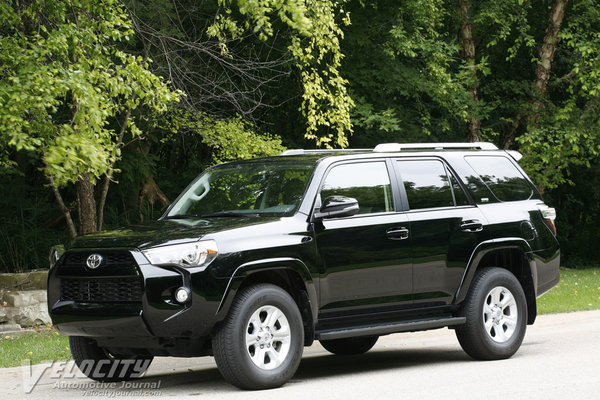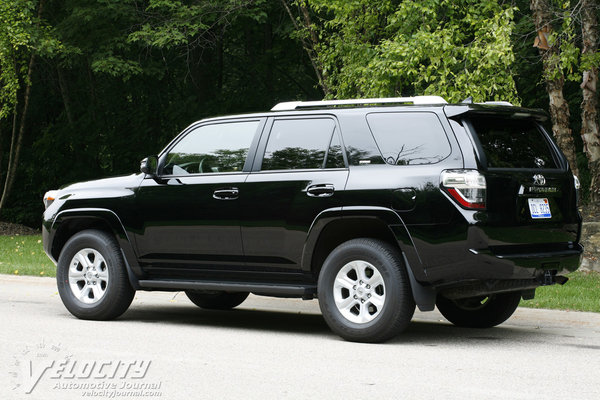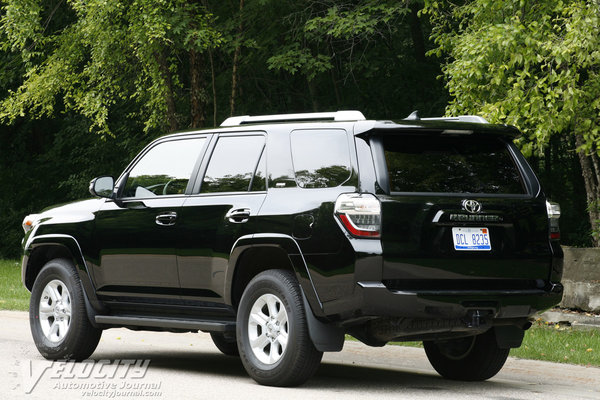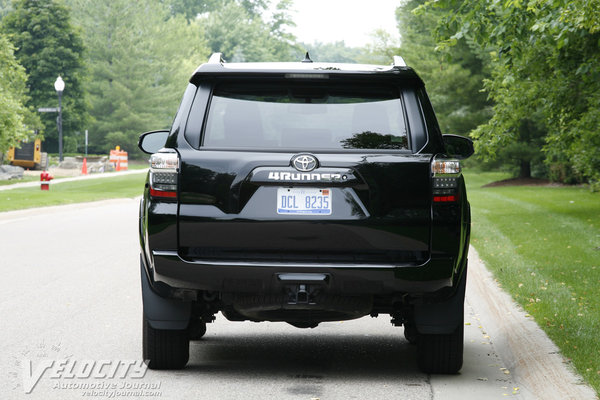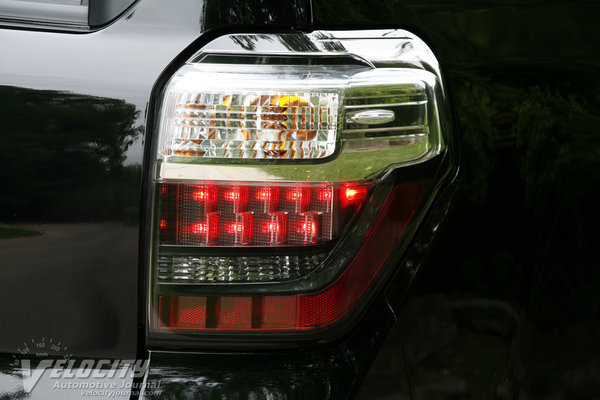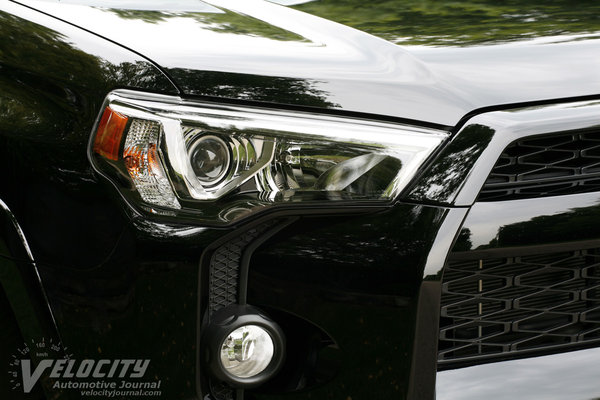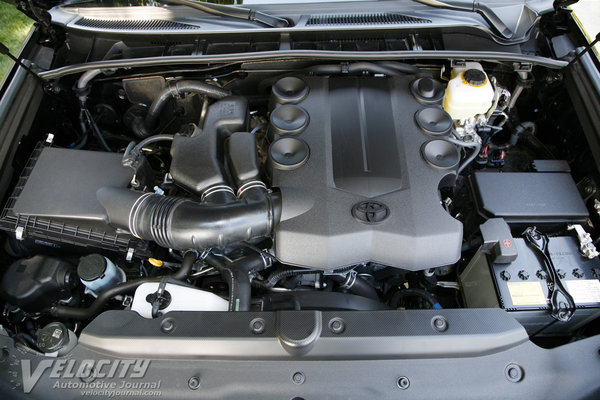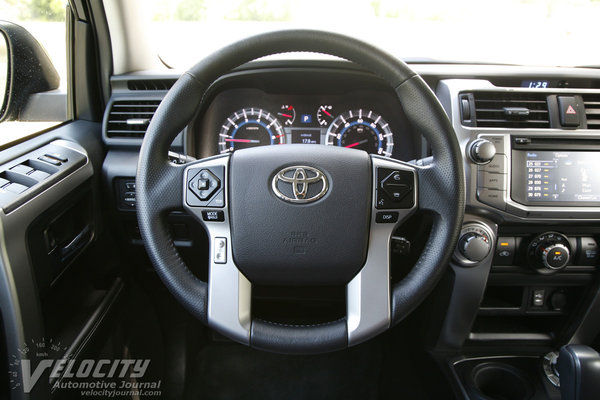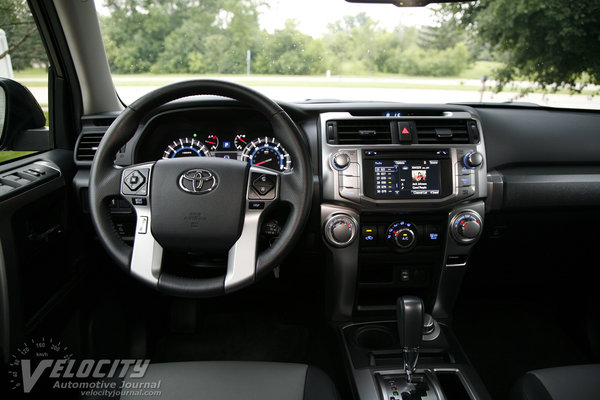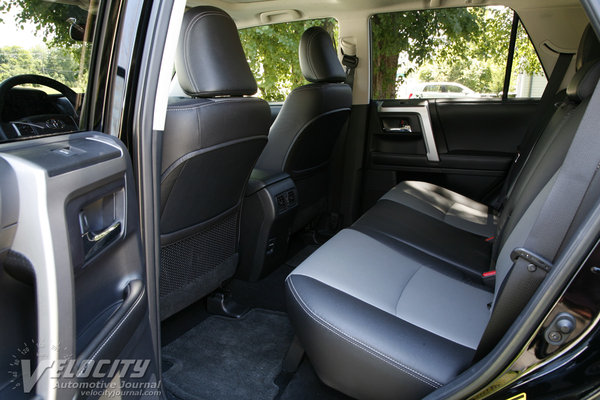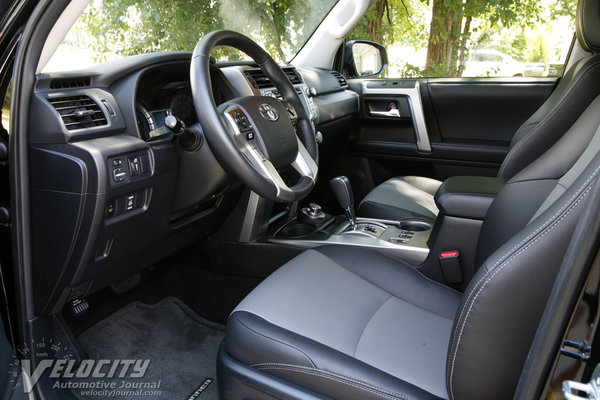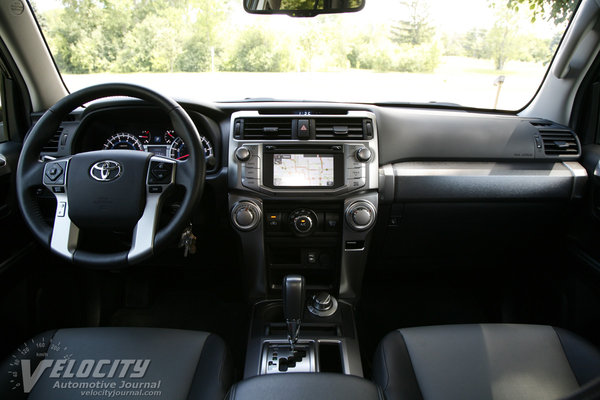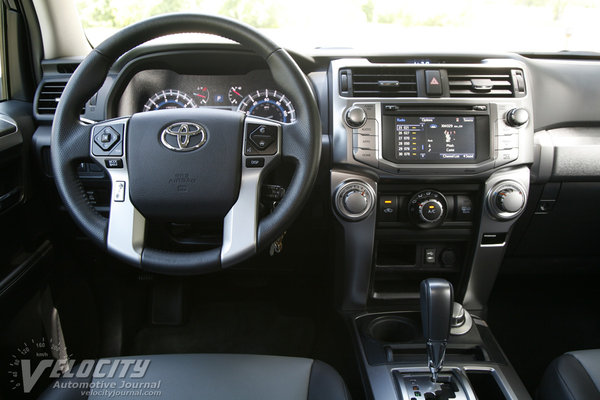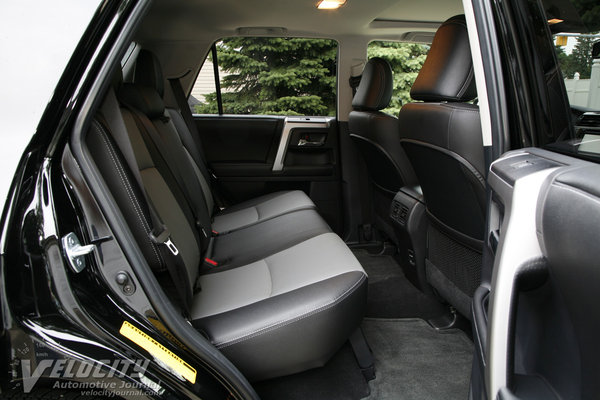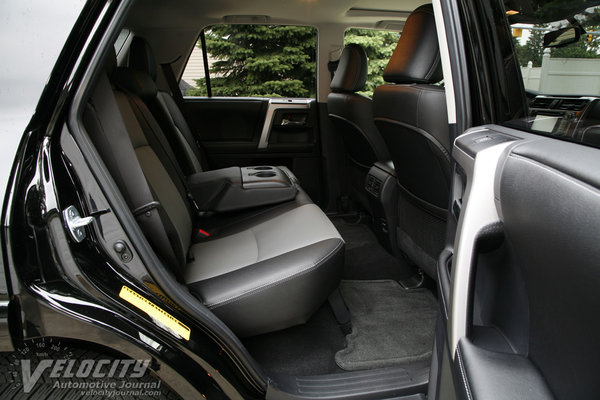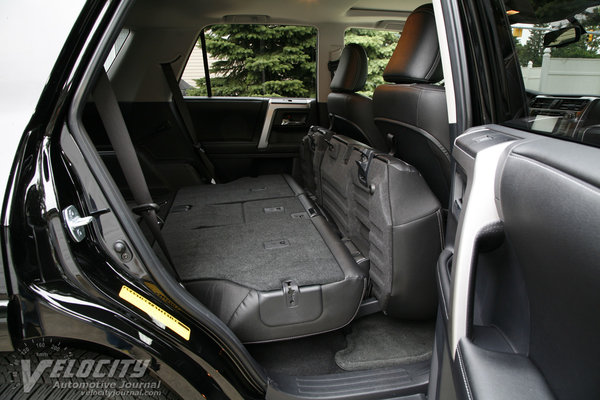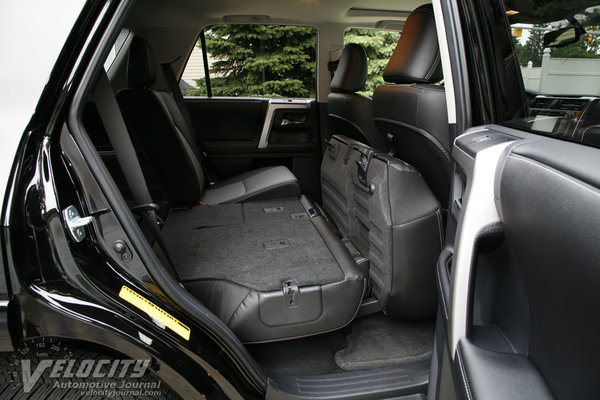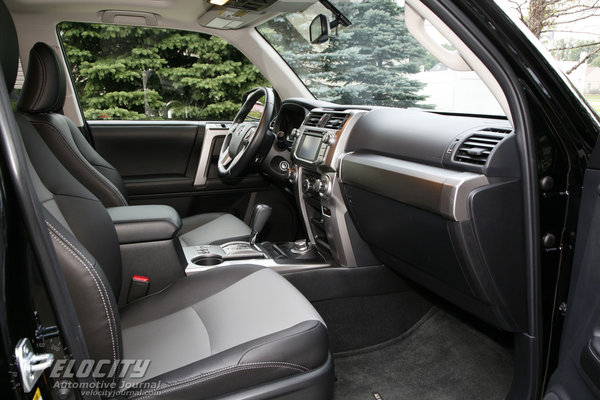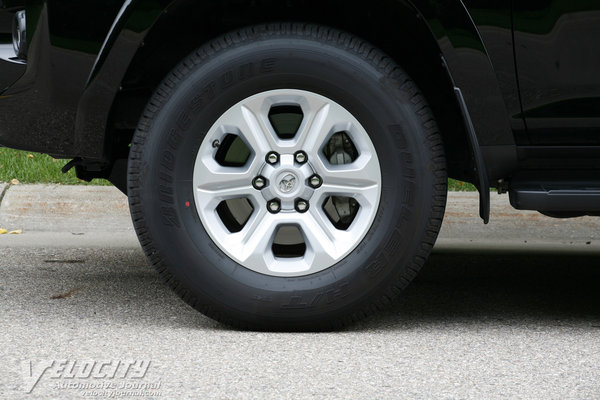2014 Toyota 4Runner SR5
11/24/2014
Shahed Hussain
The 4Runner has been in Toyota's lineup for more than 30 years, yet has never deviated from its truck-based roots. As most of its competitors have transformed into crossovers, the 4Runner makes no apologies for its heritage. Toyota sell the Highlander for customers who don't need serious off-road capability, leaving the 4Runner in its niche.
Toyota sells the 2014 4Runner in several models, starting with the base SR5 ($32,820), followed by the SR5 Premium, Trail, Trail Premium, and the Limited ($43,400). Our test vehicle was an SR5 Premium priced at $39,045 including the $860 delivery fee. Options consisted of running boards ($345) and carpeted floor mats ($225). Pricing has crept up slightly for 2015 models.
The 4Runner's interior reflects its truck-based heritage. The dashboard is hard grained plastic, but touch points such as door armrests and upper door trim are padded. Analog gauges for the tachometer and speedometer are accompanied by smaller coolant and fuel level meters. A multi-function trip computer display shows vehicle status. The perforated leather-wrapped steering wheel has integrated mobile phone, trip computer and audio controls. On the center stack are large knobs for the audio and climate control systems. Next to the 12V outlet is a USB port and an auxiliary audio input. Twisting a knob on the center console switches between 2WD, 4WD High and Low range. The gated shifter for the 5-speed automatic also includes a Sport and manual gear select mode. Next to the console cup holder are rotary knobs for the seat heaters. Under the center armrest is a large bin with an additional 12V outlet.
Only the 4Runner Limited is equipped with leather seats (heated and ventilated); all other models get seats covered in a synthetic Softex upholstery resembling leather. Front seats comfort is decent, but the flat bolsters provide minimal lateral support, although the driver will appreciate the adjustable lumbar support. The outboard rear seats are comfortable but the center position has a hard seatback, so it is only suitable for shorter journeys.
In keeping with the 4Runner's off-road heritage, Toyota kept the solid rear axle that separates a serious off-roader from a car-based SUV. Coil springs, dampers and four locating links constrain the rear axle. In front is a double wishbone layout with coil springs and dampers. Stabilizer bars in front and rear minimize body roll. SR5 and Trail models are equipped with 17-inch diameter alloy wheels and P265/70R17 mud and snow-rated tires; moving up to the Limited upsizes the wheels to 20-inch diameter alloys on P245/60R20 tires. The standard full size spare tire is essential for serious off-roading. The power-assisted rack-and-pinion steering has a variable ratio for faster steering response. Brakes are ventilated discs at all four wheels. ABS, and vehicle stability control (VSC) are standard. Ground clearance is an impressive 9.0 inches for the 2WD 4Runner, and an even higher 9.6 inches with the 4WD model. Approach angles are 30/33 degrees (2WD/4WD) and departure angles are 24/26 degrees (2WD/4WD). Toyota rates all 4Runner models with a 4,700 lbs. towing capacity per the SAE J2807 standard.
All 4Runners share a 4.0L V-6 and 5-speed automatic combination. A high/low transfer case is standard on 4WD SR5 and Trail models, but the Limited gets a Torsen(R) center differential with variable torque split. The dual overhead cam aluminum six is rated at 270-bhp @ 5,600 RPM and 278 lb.-ft. @ 4,400 RPM. Fuel consumption is rated at an unimpressive 17/23 MPG (2WD) and 17/22 (4WD). We averaged only 16 MPG in city driving and around 19 MPG on the highway.
The V-6 and 5-speed automatic provide adequate acceleration when lightly laden, but only by mashing the throttle. A hefty curb weight of 4,605 lbs. along with a large gap between first (3.52:1) and second gear (2.042:1) ratios are responsible for the 4Runner's leisurely part-throttle acceleration. Although engine revs are only 2,000 RPM at 70 MPH, highway fuel consumption was an unimpressive 19 MPG, only marginally better than the 16 MPG we achieved in city driving. A 6-speed automatic could certainly improve performance and fuel consumption.
On the road, the 4Runner drives like a body-on-frame SUV, thumping over bumps and potholes. The balloon-like tire sidewalls are responsible for a bouncy ride over tattered pavement. The solid rear axle stays well-behaved, but large bumps will cause significant axle hop. However, on smooth surfaces, the 4Runner has a surprisingly compliant, comfortable ride. Around curves, the Toyota understeers predictably as the body leans over on the outside tires. Spongy pedal feel doesn't endow much confidence, but the 4Runner stops with assurance, at least when lightly loaded. Brake hard and the 4Runner's softly sprung suspension allows the front end to drop over the front wheels. Despite the off-road oriented tires, steering feel and precision are remarkably good for an SUV, although the 4Runner demands frequent steering corrections on bumpy roads to maintain a straight path.
In the 30-plus years that Toyota has produced the 4Runner, the SUV market has evolved and expanded to include a wide range of vehicles in both size and capability. Yet the 4Runner has stayed true to its heritage as a rugged off-road capable SUV. Although midsize truck-based sport utilities have fallen out of favor, the 4Runner ranks among the few SUVs that can traverse the muddy and rocky trails favored by outdoor enthusiasts.

